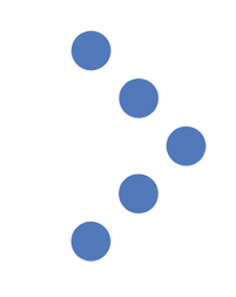By targeting the most profitable market segmentation, you will enjoy a focused target audience approach and a successful market penetration.
Market segmentation and analysis is an important first step to any marketing campaign. When you define a target market, it means you selected the client base segment that will present the most opportunity for profit.
Skipping the process of target market analysis and segmentation will waste significant money and efforts, as your marketing campaigns will not properly address the right client segment. It is pointless to address an audience with little vested interest in a particular product or service, or a target market audience that is already saturated with a competitor’s offerings.

How is B2B target market segmentation different than B2C segmentation?
Business-to-business (B2B) target segmentation is very different from business-to-consumer (B2C) segmentation. For one, selecting a supplier in B2B target markets is more complicated than consumer markets. Since people buy on behalf of their company, rather than themselves, there is more pressure to be objective and rational about their decision. Thus, in business-to-business markets, the buyers and specifiers may well know as much about a product/service as the company that supplies it.
To add, in a business-to-business context, it is unlikely that just one person will carry out the buying decision. The process of target market analysis and segmentation is often more complex in B2B situations. Here, the aim is to focus on a manageable group of decision-makers to define the target segmentation; a specifier may test and approve the product, a production manager may conduct trials, a board of directors may impose an overriding structure on the source of supply, a buyer may negotiate the price, and so on.
Defining your target audience — marketing segmentation methods
Client bases are grouped by common measures such as:
- Geographic Segmentation — for instance, a market that does business in a particular language, city, state/province, or country
- Firmographic Marketing Segmentation — a company’s number of employees, industry, or income bracket can define a client base
- Psychographic Client Base — this kind of segmentation is especially useful for repeat clients who may be drawn to anything from the price range, quality levels, or the delivery terms
- Need-Driven Market Segmentation – this can be the most difficult target client base to assess, but also one of the most fruitful. Ask, what is the motive behind a purchasing decision? What factors play into a company’s decision-making?
In order to gain a competitive advantage, target segmentation is especially important in B2B markets, as there is often little to differentiate one product from another. The segmentation is closely linked with the positioning strategy of a company. Considerations in the positioning strategy are subsequently taken into account in the design of inbound marketing campaigns.
Target market research allows you to identify and define the client base that would be most attracted to your offering. Once you have settled on an optimal target audience and initiated your marketing activities, you can begin to identify potential niche markets within your target market. Isolating niche markets enables you to focus on those subdivisions within a target audience which are defined by a shared interest or unique quality. One very important rule to remember: the more narrowly you can define your marketing segmentation, the easier it is to target.

What's Your MarketingReadyTM Ranking?
Let Direct Objective analyze your target markets to identify the most profitable target audience and define more effective target market segmentation for you!










